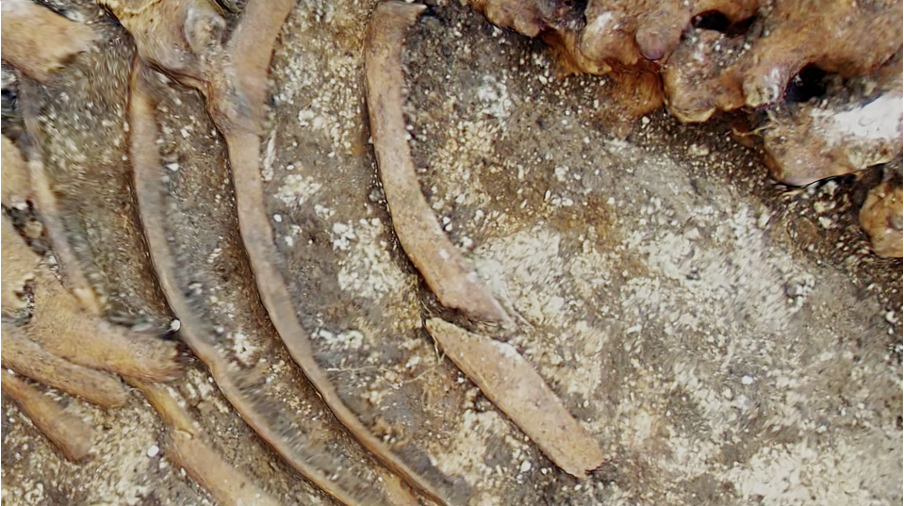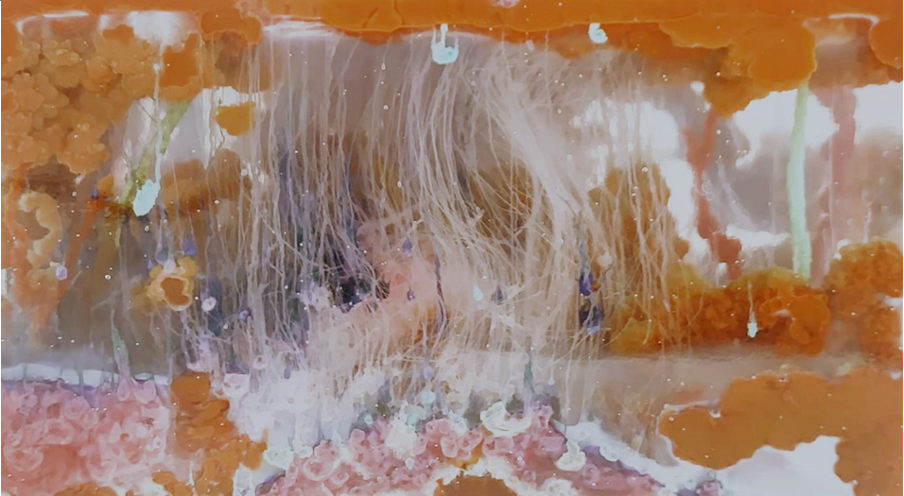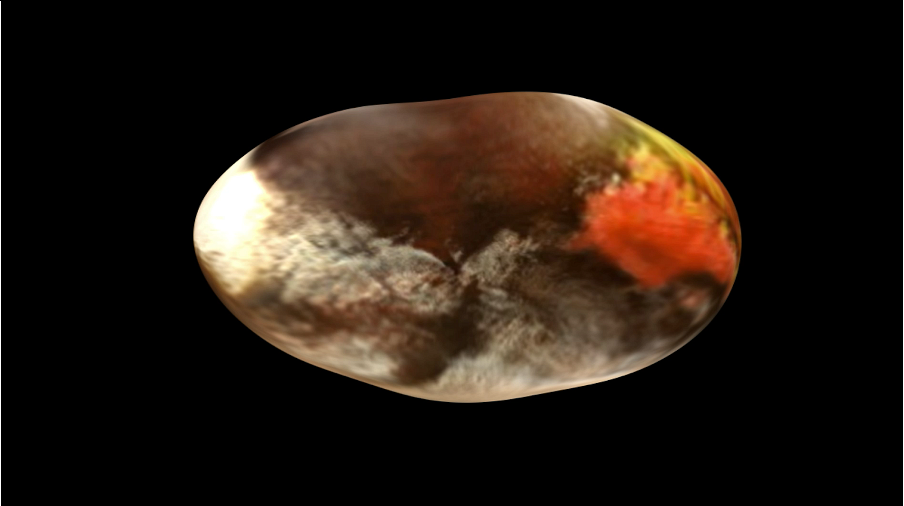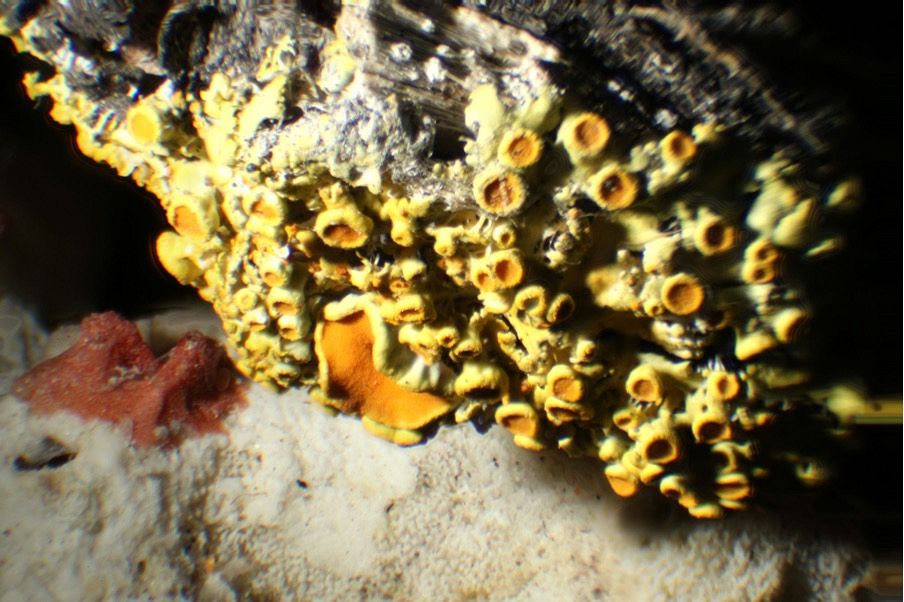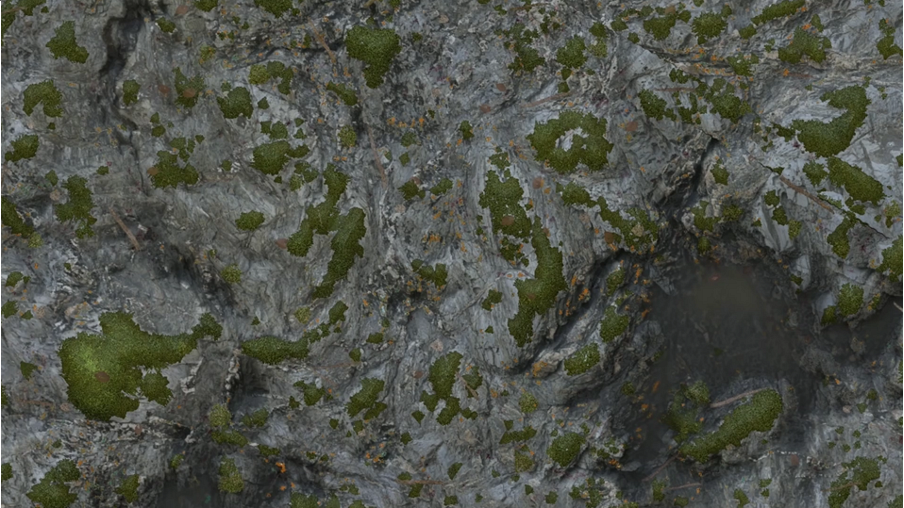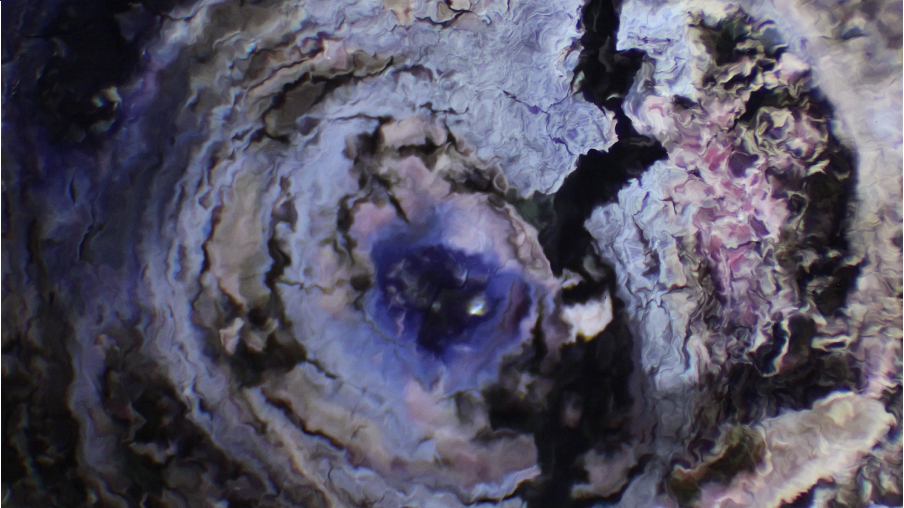We Don’t Need Another Techno-Hero
It matters which stories tell stories. Our bodies and our planet are suffocating under the manmade myths of technological heroism. In her essay “The Carrier Bag Theory of Fiction”, visionary author Ursula K. Le Guin rejects tired science and technology stories that focus on the heroics of individuals. Le Guin names this narrative structure the “linear, progressive, Time’s-(killing)-arrow mode of the Techno-Heroic.”1Le Guin, Ursula K. The carrier bag theory of fiction. Ignota Books, 2019 As she describes the stifling effects of our obsession with heroism, Le Guin references Virginia Woolf’s Glossary, wherein Woolf defined heroism as “botulism.” Botulism is a form of food poisoning associated with the bacteria Clostridium botulinum commonly found in soil and water, which produces botulinum toxin in anaerobic environments, such as a sealed aluminum can. A cheap and effective means of preserving food, the aluminum can might be considered an industrial triumph over the decaying forces of nature. Yet by attempting to block these spoiling processes, the aluminum can creates the ideal environment for a paralyzing and deadly toxin to proliferate. Similarly, contemporary heroic myths of unlimited acceleration and production create a confined space of the imagination that traps our thinking and steadily ferments a poison for life on this planet.
The monoscopic view of technology as headed towards singularity and transhumanist immortality is the techno-heroic story of the 21st century. In British and American popular discourse, a highly vocal group of scientists and technologists—Stephen Wolfram, Michio Kaku, Ray Kurzweil, Aubrey de Gray, et al.— argue that immortality is within reach, specifically the likelihood of humans achieving immortality through biological or digital control. From organ transplants, cloning, and cryonics to virtual agents and consciousness synchronization, the cultural landscape is scattered with dreams of cyborg immortality that do not allow room for decay. However, just like artist Oron Catts comments on the exploitation of living tissue in biotechnology as “outsourcing the body and its functions to a technological surrogate,”2Zurr, Ionat, and Oron Catts. Nobodies Meat, Maarav, 2018 technological immortality merely outsources decay to “external” systems in the form of excess heat, e-waste, megawatt-hours of energy, and soaring carbon emissions.
In the Western techno-utopian discourse of today, the reality of decay is outright denied, or worse, imagined as something for other people to deal with: future generations, neglected urban and rural communities, “separate” regions of the earth such as the global south, machine attendants, and other species. However, the ruptures and breakdowns of the past year have increasingly shown us the futility of this type of thinking, as well as the incredible devastation that it causes. Within a planetary system, there is no “other” zone, no external site to which the continuous force of decay can be relocated. Refusal to acknowledge and address the reality of decay tacitly permits it to be offloaded on the earth’s most vulnerable regions and populations. The heroic dream of immortality is one that obscures what philosopher Achille Mbembe calls the “death-world,” a form of “social existence in which vast populations are subjected to conditions of life conferring upon them the status of the living dead.”
This techno-utopian fantasy of complete control over life and death drives the global proliferation of capitalist biotechnologies, as well as the obsessive focus on genetic data as the singular means of understanding life. However, contemporary ecological theory stresses the unstable boundaries between living and nonliving, animate and inanimate, human and nonhuman. Among the theorists who challenge long-accepted binary systems of Life and Nonlife, including Karen Barad, Elizabeth Povinelli, and Mel Y. Chen, Eugene Thacker’s concept of biophilosophy provides a useful lens for such interrogations. In contrast to the traditional philosophy of biology, which poses questions about the principles of life, biophilosophy is most interested in the transitory state, the life that “becomes non-life, an other-than-life, a becoming-nonliving.” 3Thacker, Eugene. “Biophilosophy for the 21st century.” CTheory 1000 (2005) We see decay as a kind of perpetual deformability through which these other-than-life forms converge as a force of resistance and decomposition against mono-accelerationist capitalism and potential generative power for alternative worlds.
Decay’s Universal Language
Decay (di-ˈkā): putrefaction, decomposition, degradation, deterioration. Break down. Rot. Decline. The process of gradually becoming inferior. A gradual decrease. The process by which the nucleus of a radioactive element is transformed into the nucleus of another element by the emission of alpha particles or beta particles. Bodies decay, as does all organic matter. Broken sidewalks, potholes, and graffiti are signs of urban decay. Beware of tooth decay. The strength of cable TV signals decays over time. The character 腐 (fǔ), from the Xinhua Dictionary: obsolete thought or depraved behavior. To think old or act depraved. Chemical erosion or destruction of something. To corrupt someone.
Depending on the context, decay can be a politically and culturally charged word. The Western cultural taboo around decay is mostly associated with its sensory symbols that signify corporeal vulnerability (shriveling, putrefaction, rotting, leaking, pungent aromas, etc.). These taboo aesthetics represent the abject, evoking horror at the transgression of integrity and the collapse of meaning. According to Bulgarian-French philosopher and psychoanalyst Julia Kristeva, abjection is the breakdown of identity, system, and symbolic order. The corpse, as her primary example, is “the utmost of abjection,” the image of “death infecting life.” A decaying body is culturally perceived as lifeless, “blurred between the inanimate and the inorganic, a transitional swarming.”4Kristeva, Julia. “Powers of horror: An Essay on Abjection.” Columbia University Press, 1984 Eastern aesthetics, to the contrary, has praised the temporary nature of matter as a reflection of the cosmology of change. One of the best-known examples is Japanese architect Masayuki Kurokawa’s essay on the sense of temporary and transient (ka), where the processes of erosion, decay, and deterioration are intentionally introduced as aesthetic elements.5Kurokawa, Masayuki. “Eight Aesthetic Consciousness of Japan.” (2018)
The ambiguity of decay is mathematically articulated by Iranian philosopher Reza Negarestani, who claims that “decay does not result in equivocation between putrid and wholesome; it rather constructs both ideas as its gradationally proper forms.”6Negarestani, Reza. “Undercover softness: An introduction to the architecture and politics of decay.” Collapse 6 (2010): 379-430 Decay is not life or the absence of life, but rather the interpolation between these recognizable states, the “calculus of an infinite rot.” Negarestani clarifies that decay is a subtractive process, at once “intensively negative and extensively positive.” The infinitesimal decaying process smoothens the differentiation between humans, flies, wasps, plants, fungi, and a spectrum of toxicity. “The toad, the miasma, the sludge and the human all become part of a differential field,” in which there is no complete transformation or erasure, only continuous interpolation. Decay is a force that perpetually draws internal forms back out of themselves, a process in which both time and space are dispersed, a shadow of metabolism.
As a universal force, decay projects the terrifying image of cosmic infinity onto the rhythms of our finite lifetime. Art critic and media theorist Boris Groys speculates that if the weak waves produced by the Big Bang are still coming to us, “one can assume that there are informational waves from the Sun’s explosion in 4.5 billion years that already reach us and tremble our souls.”7Groys, Boris. “Self-design, or productive narcissism.” e-flux Architecture 10 (2018) Viewed from their respective timescales, planets, stars, galaxies, and the universe as a whole are subject to the same laws of decay, no different from human bodies, ciliates, and algae. As mentioned above, non-Western cultures have long acknowledged our temporality. In Buddhist scriptures, even Deva—the non-human beings who share godlike characteristics—are mortal angels. The decay of an angel manifests in the following signs: withered flowery crown, sweaty armpits, soiled robe, filthy bodies. In a materialistic fashion, the thawed celestial bodies return to earthly organisms and fall into the cycles of chemical loosening, ionization, and microbial metabolism.
Even in its most elemental state, matter is not immune to decay. Transmutation describes the decay of one element into another. What had been previously considered “inanimate” matter became mortal in the 20th century, as nuclear fission split the nucleus of atomic particles. Time itself was rediscovered as having the capacity to vaporize, diffract, disperse, and entangle with radioactive matter. American feminist theorist Karen Barad states that it is the finite lifetime of particles that introduces quantum field theory (QFT) as a new subject in physics, “a response to the ephemeral nature of life.” Even the smallest bits of matter such as “electrons, infinitesimal point particles with no dimensions, no structure” are haunted by the indeterminacy of infinite possibilities where every event expresses that “the dying is within the living within the dying.”8Barad, Karen. “No small matter: Mushroom clouds, ecologies of nothingness, and strange topologies of spacetimemattering.” Arts of living on a damaged planet (2017): 103-120
A Myth with No Beginning, and Infinite Endings
As artists, where should we begin to tell stories about decay? Stories with no origins, no heroes, only a myriad of fuzzy, or slimy, or wriggling, or crawling, or floating, or dormant, or swollen, sprawling, exploding spores, or ecstatic particles. They are stories with no conclusion, only leading to infinite endings. They are all knots that knot the dynamic web of decay, causing it to shapeshift to whatever is gathered: slime mold, soil bacteria, mycelium networks, mesocosms, automata on lizard skin scales, living robots constructed by frog heart and skin cells, chemical plumes, minerals and species remnants, layering complexity of molecules, and the molecular networks of infection and contagion. What Le Guin calls the “carrier bag” form of storytelling is an amorphous leaking container, a mess of muck and multiplicities, in which the soggy hero looks quite foolish.
But are there some more humble strategies that we might turn to for inspiration? What non-heroic beings manage to navigate and even thrive within the murk of our damaged planet? The slime mold, Physarum polycephalum, is a common decomposer that feeds on bacteria, fungi, and decaying plants, a giant protoplasmic cell formed by a population of autonomous nuclei that acts as a whole and performs advanced spatial intelligence. The extracellular slime trails function something like external memories, pulsing over a formless, ever-becoming collective brain. In artist Jenna Sutela’s work Orgs, slime mold becomes an abstract machine that generates itself through three-dimensional organizational charts and system diagrams. During a performance, Sutela ingested her slime mold collaborator as an experimental approach towards ego-death, inviting another intelligence to erode her own consciousness, and dissolve the boundary of self and others.9Sutela, Jenna. Orgs: From Slime Mold To Silicon Valley And Beyond. Garret Publications, 2017
Or consider the mycorrhizal network that sprawls beneath earth’s surface, where it has been weaving together plant roots and fungi, channeling flows of life and decay for 400 million years. In post-media artist Saša Spačal's installation MycoMythologies, the artist imagines a mythological fungal network, where microscopic nodes transmit sonic data, following the network protocol of mycorrhizae. The constant flow of “mycelial” information creates a distant glitchy murmur which a machine interpreter then attempts to record and repeat. But the machine fails to compute the overwhelming influx of sonic data from the many voices of the mycelial network, causing a system breakdown.10Spačal, Saša. “MycoMythologies: Rupture.” Saša Spačal website, 2020. https://www.agapea.si/en/ Ancient slime molds, soil bacteria, and mycorrhizal networks predate us and will thrive on this planet with or without humans. What can these life forms, who are more proficient in decomposition, teach us about collective coexistence in toxic landscapes of decay? What can they teach us of intentional system breakdown?
Decay manifests through matter that can never be fully captured or internalized—elements of incompressible complexity and incomputable randomness. It is this infinite dissipation and leakage that becomes a resistant force to the complete capitalization of biological value. Cultural theorists Luciana Parisi and Tiziana Terranova noted that our societies have transformed from disciplined bodies to more subtle manipulations, seeking more insidious forms of management at finer and finer levels of resolution.11Parisi, Luciana, and Tiziana Terranova. "Heat-death: emergence and control in genetic engineering and artificial life." CTheory (2000): 5-10 Plasmodial organisms have shown us a living model of nonlinear action and lateral collaboration, the incredible resilience and resistive capacity of multi-headed intelligence. Self-production and reproduction at the molecular level also provide alternative micropolitics of living, dying, and reproduction. In Molecular Sex by Johanna Bruckner, a sex robot acts as a brittle star: “Multi-limbed and star-shaped, this living, breathing and mutating deep-sea animal” can reproduce asexually and through regeneration or cloning, while Wolbachia bacteria, a parasitic microbe that exchanges genes with different species, can alter the reproductive capacity of its host.12Bruckner, Johanna. “Molecular Sex and Polymorphic Sensibilities.” In Gansing, Kristoffer and Inga Luchs, eds., The Eternal Network: The Ends and Becomings of Network Culture (2020)
Building on this, is it possible to take a more progressive stance by acknowledging decay and decomposition within our ideas of living systems? Designer Andrea Ling has considered the decay of biological materials as a central design element, using enzymes, fungi, bacteria, and other biological agents to guide and regulate the decay process. Returning to Oron Catts’s comment on the “outsourcing” of life functions, there is no “external” living system from an ecological perspective; the surplus of one particular subsystem will engender a new cycle of another. Designing with decay allows artificial creations to better align with the logics of nature and provides a more resilient system of growth, beyond the failures of extractive capitalist systems.13Ling, Andrea, “Metabolic Efficiency as Design.” decompose, 2020. (decompose.institute/Andrea-Ling-Metabolic-Efficiency-as-Design)
This approach can be applied to larger ecosystems. Back in 1959, Stafford Beer in Cybernetics and Management imagined an automated factory controlled by a biological computer—a swarm of insects or a complex ecosystem such as a pond. He believed that the problems of managing complex systems such as a society or the economy would be beyond human cognitive ability, and the biological systems would be able to “grow” a better solution.14Pickering, Andrew. “The science of the unknowable: Stafford Beer's cybernetic informatics.” Kybernetes (2004) French artist and interactive designer Michael Sedbon’s CMDcomprises two colonies of photosynthetic bacteria that compete for the same light source through the production of oxygen, with the distribution of light regulated by artificial intelligence. A consistently optimized genetic algorithm works with continuously reproducing and declining photosynthetic cells, iterating over models of political and economic systems that might be tested at the macroscopic scale.15Sedbon, Michael. “Biologizing the Infocene.” decompose, 2020. (decompose.institute/Michael-Sedbon-Biologizing-the-Infocene)
The growing tendency of merging biological, ecological, and digital elements in art and design provides a new context of studying life, death, and decay in complex hybrid systems. Artist Anicka Yi creates new kinds of artificial life that fuse molecular sensual ecology, biology, and machine intelligence. In Terra Incognita (2019), a micro-ecosystem of soil bacteria changes over time depending on the AI-controlled environment, and the AI entity learns to understand the smell of the bacteria in all its forms: stasis, decay and growth, amending the environment in response. In the complex system of Pierre Huyghe’s ALife Ahead Ahead (2017), the division rate of infinitely regenerating cancer cells is regulated by feedback loops from the artificial ecology. In Tega Brain’s Deep Swamp (2018), swamp territories are under the management, engineering, and strategic intervention of three AI agents, whose responsibilities are to modify the wetland conditions—flood, melt, dehydrate and erode—to achieve optimal conservation.
Rot Never Sleeps
Let us here emphasize that we are not advocates for more decay. Rather, we are calling for its acknowledgment as a legitimate ecological and physical force, one that does not have an inherent moral or political agenda. We need to end our decay-phobia and denial of decay, especially in Western culture where the taboo around decay and its aesthetics is perhaps the strongest and most insidious. If decay must happen, can we have a more thoughtful and democratic consideration of where it occurs and who and what it affects? For instance, we might collectively choose to embrace the decay of our sickly political and economic systems, rather than the decay of those made more and more vulnerable by these systems. Why chase a myth of human techno-immortality when, as Rosi Braidotti has stated, “a lot of us humans are far more mortal than others?”16Braidotti, Rosi. “Necropolitics and Ways of Dying.” Sonic Acts Festival, filmed February 22, 2019, video of lecture, https://youtu.be/UnFbKv_WFN0
In the scientific documentary The Most Unknown (2018), there is a conversation between dark matter physicist Davide D’Angelo and microbiologist Jennifer Macalady, the latter of whom seeks the origin of life on Earth underground. Macalady says, “We think all life, all of the 30 trillion species have descended from a common ancestor. And that means it’s easy for us to see them because we know what to look for. But if there were another ancestor, we wouldn’t be able to see it because we don’t know what to look for.” Our combined decay-phobia and techno-heroic fantasies keep our imaginations trapped in the spinning haze of the monotechnological, accelerationist narrative. There is a persistent and maniacal desire for limitless production and reproduction without decay. We must escape from this confined and increasingly toxic space, into the external darkness of the unknown.
So how shall we move? Can we once again refer to the wisdom of our ancient plasmodial cousins? They are simultaneously coordinated but not coordinated, feeling out in the dark, trying to communicate with one another, collectivizing and fracturing in different moments, under a decentralized, multi-headed leadership. Is it possible to have movement, transformation, and coordination that is not centered around hubs of concentrated power and privilege? Similar to the slime mold, we might forgo the drama and hubris of heroic tales, and instead embrace the diversity of our partial and situated knowledge, our own type of spatialized intelligence.
Decay represents an increase in entropy within a given system. As Parisi and Terranova have urged us, “we have to come up with ways of dealing with turbulence that is based on ethics rather than control.”17Parisi, Luciana, and Tiziana Terranova. “Heat-death: emergence and control in genetic engineering and artificial life.” CTheory (2000): 5-10 We believe the question of decay is one with a political (and necropolitical) imperative. As we acknowledge the necessity of both decay and radical change, is there a way to surf this turbulence, to take strategic action in smaller and less predictable ways? It is possible for a “molecular revolution of step by step interventions by communities?”18Braidotti, Rosi. Interview by Iu Andrés. Open City Thinking Biennale, CCCB Lab, April 2, 2019, https://youtu.be/A6PLJqtDp6Q As we have stated, this is a hopeful yet unglamorous tale, which demands we negotiate varying levels of toxicity, and there is no time for utopian delusions or individual heroics. Let us roll up our sleeves, trudge into the muck that everywhere surrounds us, and prepare to work with rot, which might make a formidable ally after all, as it never sleeps.
*Image sources:
Becoming Less and Less, single-channel video with sound, 11 mins, 2021
Shuyi Cao and Remina Greenfield are co-founders of Decompose - an art collective and experimental institute for transdisciplinary research, art production, and education. Decomposition serves as a lens to explore the complexities, vulnerabilities, and regenerative power of biological, social, and digital ecosystems. Remina and Shuyi are current members of NEW INC’s Creative Science track at the New Museum. They teach at Parsons School of Design and have given guest lectures and workshops at the International Symposium on Machine Learning and Art Hongkong, the University of Applied Arts Vienna, Stevens Institute of Technology, Pratt Institute, Civic Art Lab NY, bioFashiontech LAB CT, and Studio XX MTL.
website: decompose.institute
